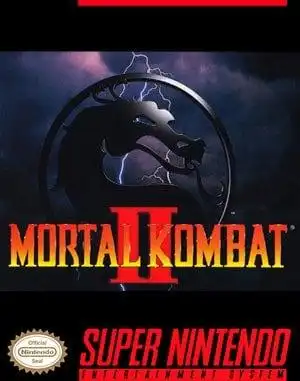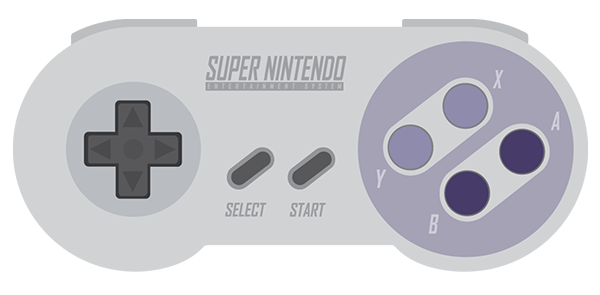Mortal Kombat II: Reliving the Arcade King of the 90s
Remember the sound? That iconic, distorted "MORTAL KOMBAT!" yelling from the arcade cabinet, drawing you in like a moth to a violent, pixelated flame. For many of us who grew up in the 90s, Mortal Kombat II wasn't just a game; it was an event. It was the reason you begged for quarters, the source of playground legends about hidden characters, and the ultimate test of friendship (or lack thereof) during intense multiplayer showdowns.
Following the groundbreaking success of the original, Midway didn't just make a sequel; they crafted a masterpiece that refined everything we loved and cranked the dial to eleven. Let's take a nostalgic dive back into what made MKII an undisputed champion of the arcade and home console scene.
Why MKII Was an Instant Classic
Building on the foundation of the first game, Mortal Kombat II arrived with more fighters, more moves, and significantly more secrets. It felt bigger, bolder, and bloodier than its predecessor, immediately grabbing the attention of gamers worldwide.
- Expanded Roster: Gone were some characters from the first game, replaced by fan favorites like Kitana, Mileena, Kung Lao, and the fearsome Shao Kahn himself. With 12 playable characters right off the bat (plus secrets!), there was a fighter for everyone.
- Refined Gameplay: While keeping the core 2D fighting games mechanics, MKII tightened things up. Special moves felt more intuitive, combos were more prevalent, and the pace was just right. It was easy to pick up but offered depth for dedicated players.
- The Finishing Moves Revolution: Fatalities were back, and they were gorier and more creative than ever. But MKII didn't stop there. It introduced the world to Friendships (turning opponents into harmless objects or performing silly actions) and Babalities (transforming foes into crying infants). These bizarre, non-lethal finishers added a layer of humor and unpredictability that became instantly legendary.
The Look, The Sound, The Vibe
Midway's use of digitized sprites gave Mortal Kombat II a unique, gritty realism that stood out from the hand-drawn sprites of competitors like Street Fighter. While perhaps dated by today's standards, in the 90s, it looked incredibly cool and contributed heavily to the game's mature, slightly unsettling atmosphere.
The stages were equally memorable, from the ominous Dead Pool with its acid bath fatality to the serene (but deadly) Living Forest. The music set a moody, atmospheric tone, but it was the sound effects that truly shined. The satisfying thud of a punch, the whoosh of a special move, and the utterly gruesome sounds accompanying a Fatality were pure audio gold.
The Reign of Multiplayer
Let's be honest: while the single-player tower offered a decent challenge against the AI (and Shao Kahn was a notoriously cheap final boss!), Mortal Kombat II truly came alive when played against another person. Hours melted away in front of arcade cabinets or console screens as friends battled it out, mastering combos, timing blocks, and, of course, trying to nail those finishing moves.
The thrill of landing a perfect uppercut, the tension of a close match, the sheer joy (or frustration) of pulling off a complex Fatality – these are the memories that define MKII for many of us. It was the ultimate couch co-op/versus experience of its time.
Reliving the Glory: Playing Mortal Kombat II Today
Feeling that rush of nostalgia? The good news is you don't need a time machine (or a pocket full of quarters) to experience Mortal Kombat II again.
- Digital Stores: Games like GOG.com often offer classic Mortal Kombat titles, sometimes bundled together, optimized to run on modern PCs. This is often the easiest and most reliable way to get a legitimate, working version.
- Emulation: For PC versions specifically, tools like DOSBox allow you to recreate the environment needed to run the original DOS game files. While requiring a bit more technical know-how, it's a popular method among retro enthusiasts. (Note: Always ensure you own the original game when using emulation).
- Collections: Mortal Kombat games have appeared in various collections over the years on modern consoles, sometimes including MKII.
Whether you're revisiting it or experiencing it for the first time, firing up Mortal Kombat II is a trip back to an era where digitized blood, hidden secrets, and the simple joy of yelling "Toasty!" reigned supreme.
Frequently Asked Questions About Mortal Kombat II
Can I play Mortal Kombat II on modern computers?
Yes, you can often find MKII available digitally on platforms like GOG.com, or you can play older PC versions using emulation software like DOSBox if you own the original game.
What was new in Mortal Kombat II compared to the first game?
MKII significantly expanded the character roster, introduced new finishing moves like Friendships and Babalities, refined the gameplay mechanics, and featured improved graphics and sound.
What are Friendships and Babalities?
Friendships and Babalities were non-lethal finishing moves introduced in MKII. Friendships involved performing a silly, harmless action (like giving a gift), while Babalities turned the defeated opponent into a crying baby.
Is Mortal Kombat II known for its single-player or multiplayer?
While it has a single-player mode, Mortal Kombat II is most famous and fondly remembered for its incredibly engaging and competitive two-player multiplayer experience.


